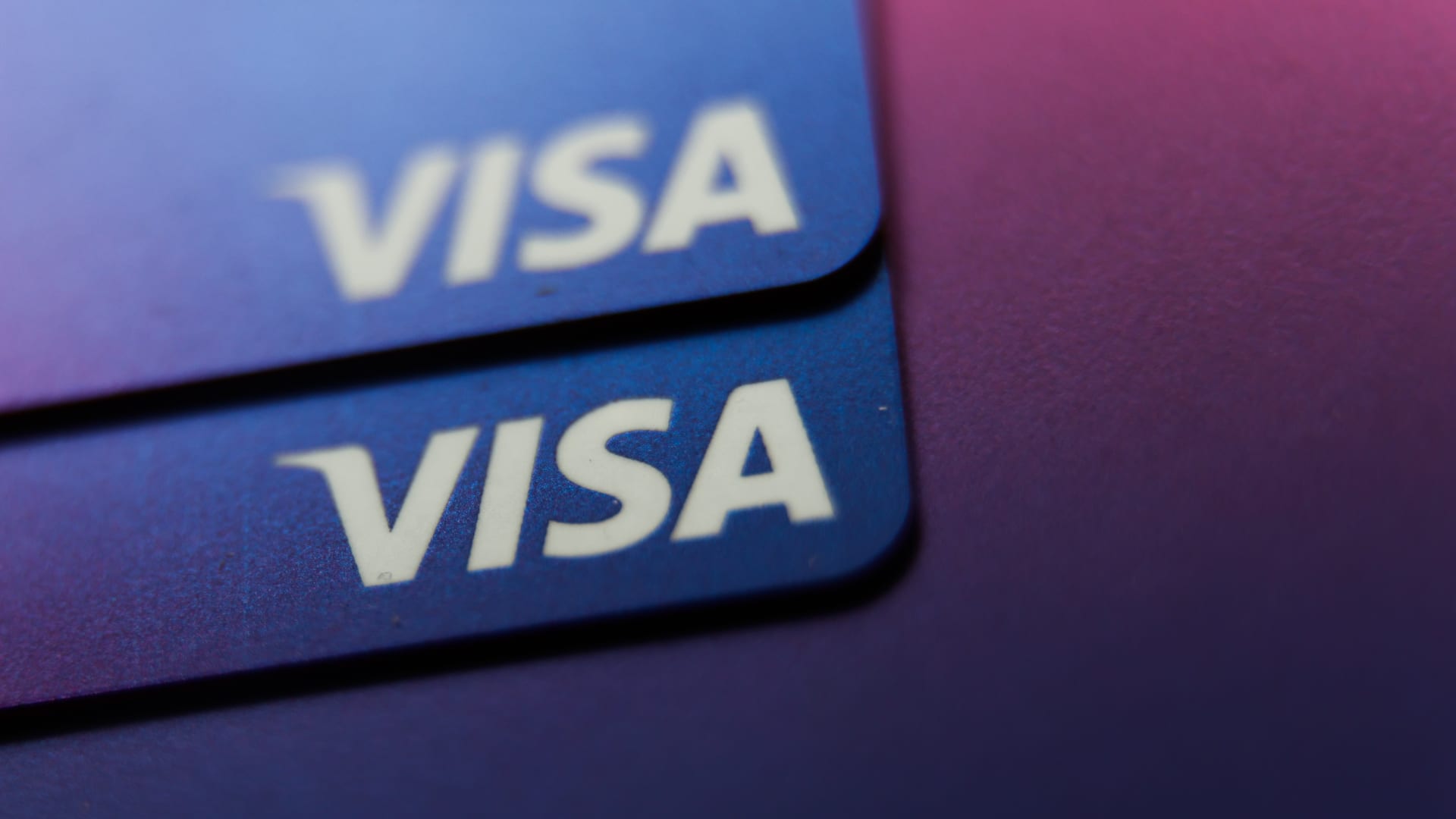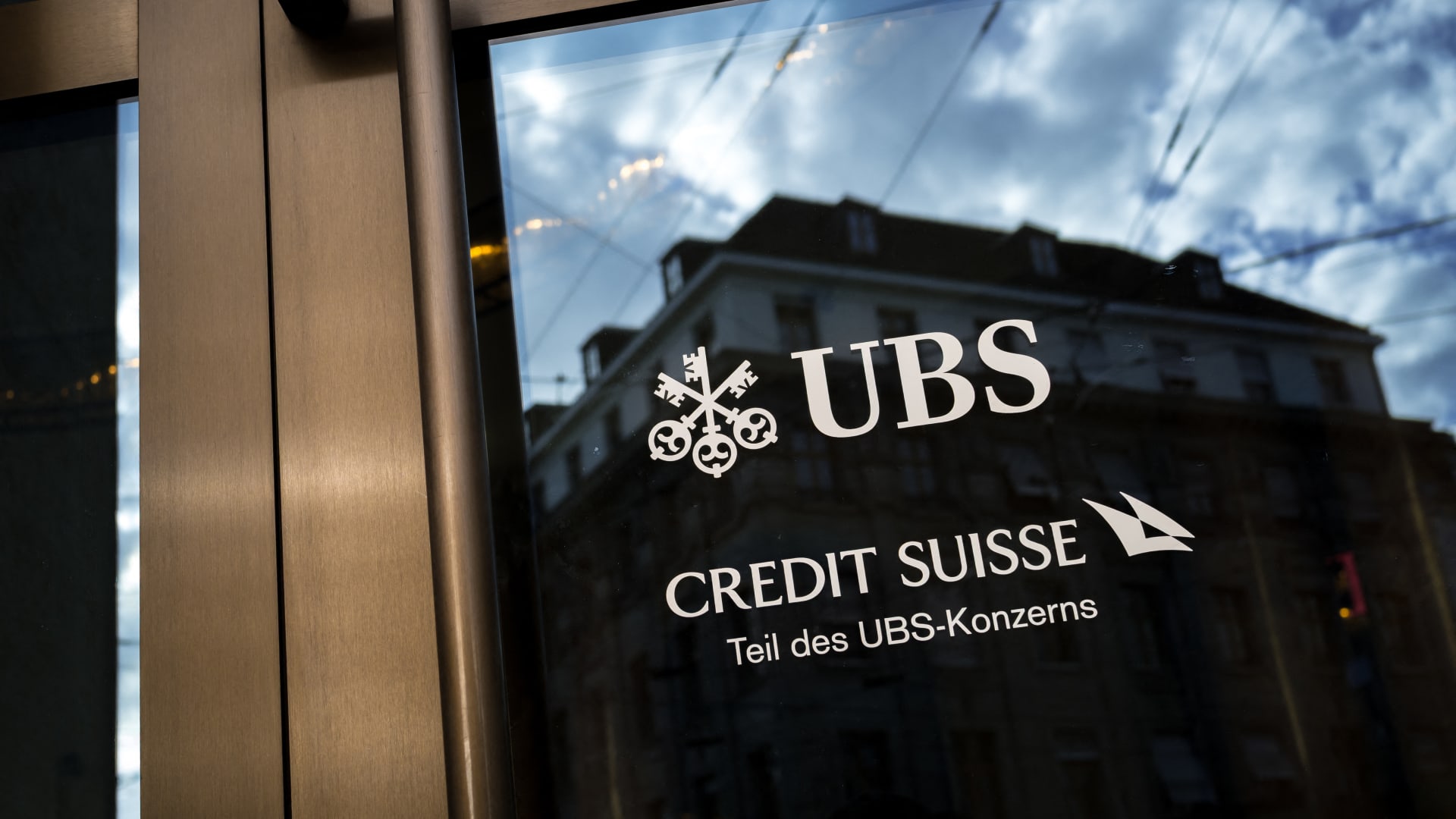Nurphoto | Nurphoto | Getty Images
Visa said it plans to launch a dedicated service for bank transfers, skipping credit cards and the traditional direct debit process.
Visa, which alongside Mastercard is one of the world’s largest card networks, said Thursday it plans to launch a dedicated service for account-to-account (A2A) payments in Europe next year.
Users will be able set up direct debits — transactions that take funds directly from your bank account — on merchants’ e-commerce stores with just a few clicks.
Visa said consumers will be able to monitor these payments more easily and raise any issues by clicking a button in their banking app, giving them a similar level of protection to when they use their cards.
The service should help people deal with problems like unauthorized auto-renewals of subscriptions, by making it easier for people to reverse direct debit transactions and get their money back, Visa said. It won’t initially apply its A2A service to things like TV streaming services, gym memberships and food boxes, Visa added, but this is planned for the future.
The product will initially launch in the U.K. in early 2025, with subsequent releases in the Nordic region and elsewhere in Europe later in 2025.
Direct debit headaches
The problem currently is that when a consumer sets up a payment for things like utility bills or childcare, they need to fill in a direct debit form.
But this offers consumers little control, as they have to share their bank details and personal information, which isn’t secure, and have limited control over the payment amount.

Static direct debits, for example, require advance notice of any changes to the amount taken, meaning you have to either cancel the direct debit and set up a new one or carry out a one-off transfer.
With Visa A2A, consumers will be able to set up variable recurring payments (VRP), a new type of payment that allows people to make and manage recurring payments of varying amounts.
“We want to bring pay-by-bank methods into the 21st century and give consumers choice, peace of mind and a digital experience they know and love,” Mandy Lamb, Visa’s managing director for the U.K. and Ireland, said in a statement Thursday.
“That’s why we are collaborating with UK banks and open banking players, bringing our technology and years of experience in the payments card market to create an open system for A2A payments to thrive.”
Visa’s A2A product relies on a technology called open banking, which requires lenders to provide third-party fintechs with access to consumer banking data.
Open banking has gained popularity over the years, especially in Europe, thanks to regulatory reforms to the banking system.
The technology has enabled new payment services that can link directly to consumers’ bank accounts and authorize payments on their behalf — provided they’ve got permission.
In 2021, Visa acquired Tink, an open banking service, for 1.8 billion euros ($2 billion). The deal came on the heels of an abandoned bid from Visa to buy competing open banking firm Plaid.
Visa’s buyout of Tink was viewed as a way for it to get ahead of the threat from emerging fintechs building products that allow consumers — and merchants — to avoid paying its card transaction fees.
Merchants have long bemoaned Visa and Mastercard’s credit and debit card fees, accusing the companies of inflating so-called interchange fees and barring them from directing people to cheaper alternatives.
In March, the two companies reached a historic $30 billion settlement to reduce their interchange fees — which are taken out of a merchant’s bank account when a shopper uses their card to pay for something.
Visa didn’t share details on how it would monetize its A2A service. By giving merchants the option to bypass cards for payments, there’s a risk that Visa could potentially cannibalize its own card business.
For its part, Visa told CNBC it is and always has been focused on enabling the best ways for people to pay and get paid, whether that’s through a card or non-card transaction.

 Blog Post1 week ago
Blog Post1 week ago
 Economics1 week ago
Economics1 week ago
 Finance1 week ago
Finance1 week ago
 Personal Finance1 week ago
Personal Finance1 week ago
 Accounting1 week ago
Accounting1 week ago
 Economics1 week ago
Economics1 week ago
 Personal Finance6 days ago
Personal Finance6 days ago
 Personal Finance1 week ago
Personal Finance1 week ago










